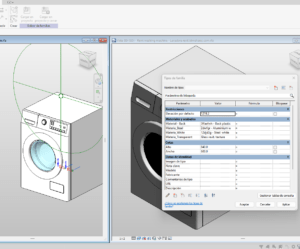In the world of construction, the Building Information Modeling (BIM) methodology is transforming the way projects are executed. At the core of any successful BIM project lies the Business Execution Plan (BEP), a comprehensive guide that outlines how every aspect of the project will be handled, from communication and coordination to data management and quality control. Without a well-structured BEP, even the most promising projects can face delays, miscommunication, or costly errors.
What is a BIM Execution Plan (BEP)?

A BEP, or BIM Execution Plan, is a crucial document for projects that rely on BIM technology. It acts as a roadmap that defines how the project will be managed from start to finish. Whether you’re dealing with architectural, engineering, or civil projects, the BEP ensures that all stakeholders—architects, engineers, contractors, and owners—are on the same page.
The BEP lays out key components such as project goals, roles and responsibilities, communication protocols, data exchange methods, and quality control measures. It provides a clear framework for collaboration and helps to minimize confusion or disputes that might arise during the project.
Why Is a BEP Essential?
The importance of a BEP in BIM projects cannot be overstated. By creating a clear framework for all team members, it significantly reduces the risk of errors and delays. Every stakeholder knows their role, and there is a structured plan to follow, minimizing the likelihood of miscommunication.
Additionally, a well-implemented BEP enhances coordination across teams and departments. This leads to greater efficiency and productivity since potential challenges or conflicts are identified and addressed early on. By establishing clear expectations, the BEP reduces unnecessary stress and enables smoother project execution.
Key Components of a BEP
A successful BIM Execution Plan BEP contains several critical components that guide the project’s execution:
- Project Scope and Goals: The BEP must clearly define the scope and objectives of the project. This ensures that everyone involved understands the desired outcomes and works towards a shared goal.
- Roles and Responsibilities: It is crucial to assign clear roles and responsibilities within the BEP. Each team member, whether they’re part of design, construction, or management, must understand their duties to avoid overlapping tasks or confusion.
- Communication Plan: Effective communication is at the heart of every successful BIM project. The BEP should outline how and when information will be shared, ensuring that team members and stakeholders stay aligned and informed.
- Data Management Procedures: Given that BIM relies heavily on digital models and data sharing, the BEP must define how data will be created, shared, and updated throughout the project lifecycle.
- Quality Control Measures: To maintain the highest standards, the BEP should include a quality control plan with regular reviews and audits to ensure that the project stays on track.
Roles and Responsibilities in the BEP
The BIM Execution Plan BEP designates specific roles for various stakeholders, ensuring clear communication and accountability:
- Project Manager: The central figure responsible for overseeing the entire project. The project manager ensures that the BEP is followed and updated as necessary.
- BIM Manager: Focused on the implementation and management of the BIM model, ensuring that all parties work within the same framework and that BIM standards are adhered to.
- Arquitecto: Responsible for designing the project and ensuring that the architectural model aligns with the overall BIM plan.
- Engineer: Tasked with developing the technical aspects of the project, the engineer works closely with the BIM manager to ensure accuracy.
- Constructor: Oversees the actual construction, ensuring that all work is completed according to the BIM model and project requirements.
Data Management and Information Sharing

Data management is critical in any BIM project. The BEP must establish clear protocols for data exchange, defining which file formats to use and how to manage updates or revisions. It’s essential to set standard practices, such as the use of formats like IFC or COBie, to ensure smooth collaboration.
A dedicated data manager is often tasked with overseeing the process, ensuring that all stakeholders have access to accurate and updated information. The BEP also includes procedures for resolving data conflicts and managing errors, ensuring a seamless information flow throughout the project.
Quality Control and Assurance
To ensure project success, the BEP outlines a quality control framework. This involves regular audits, progress evaluations, and milestone checks to confirm that work is proceeding as planned. Any deviations from the plan are immediately addressed, preventing small issues from becoming larger, costly problems.
In addition to quality control, the BEP specifies how accountability will be managed. Team members must take responsibility for their work, and any problems must be reported and resolved quickly. This structure reduces the risk of mistakes and ensures a high standard of work throughout the project.
Project Timeline and Milestones
One of the BEP’s most important components is the project timeline. This timeline sets out key milestones and deadlines, ensuring that the project progresses smoothly. Milestones might include the completion of conceptual design, the start of construction, or the delivery of final 3D models.
The BEP allows for flexibility, but maintaining a clear record of progress helps ensure transparency and accountability. By breaking down the project into smaller, manageable phases, the BEP helps teams stay organized and on track.
Free Revit families on Bimshares.com






